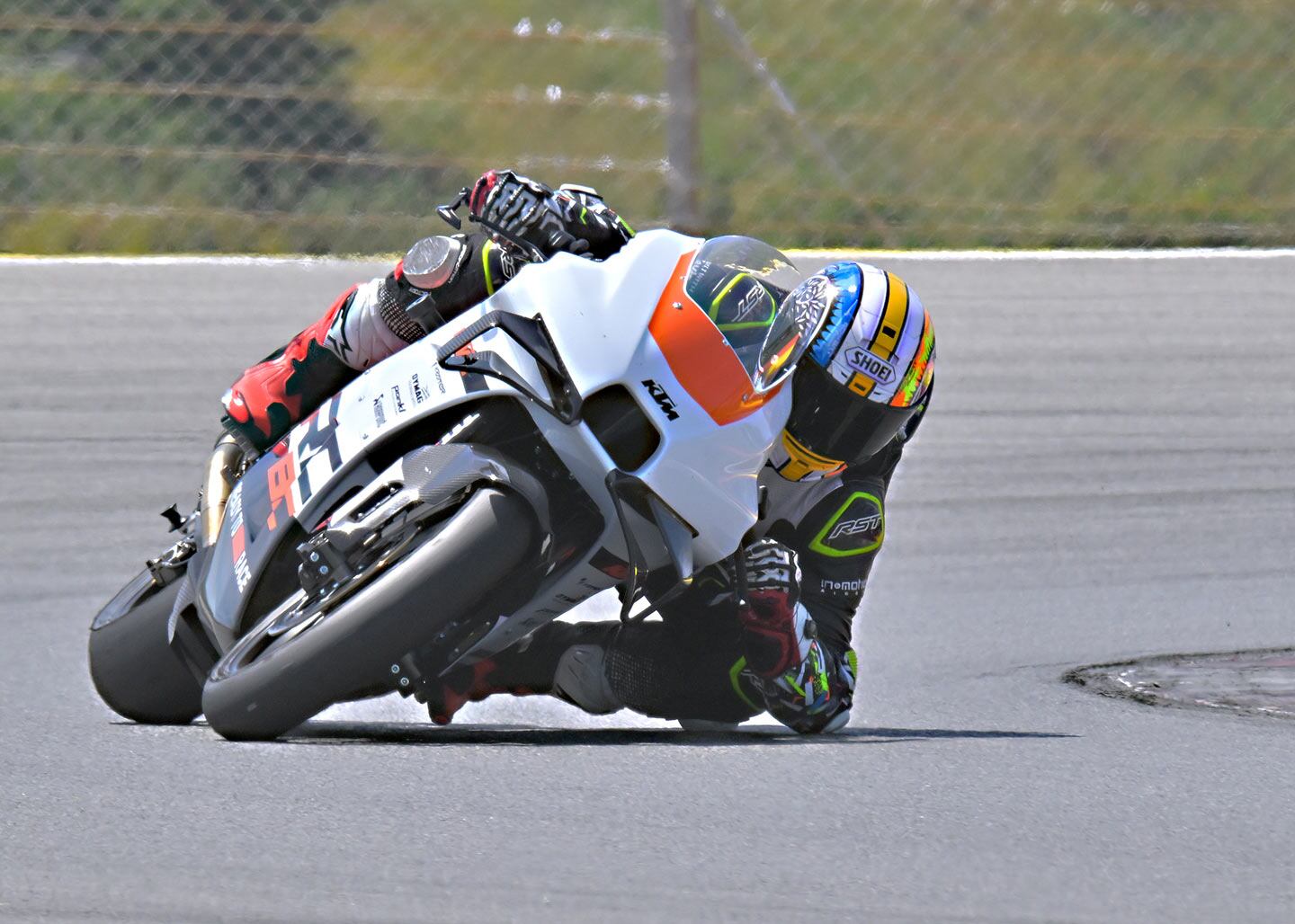Camber thrust. What is it? How does it work? I remember how mystified I was when I first encountered this idea: that a tire could generate a cornering side thrust just by cambering—that is, leaning as motorcycles do—without being steered as car tires are.
When the motorcycle is upright and you want to turn, the first step is to lean the bike into the turn. To do this, you steer the tires out from under the bike by very slightly turning the bars opposite to the turn. This steers first the front wheel, and then the rear wheel out from under the bike’s center of mass, causing it to fall over into the turn. This is countersteering.
What stops it from falling completely over? Two things:
- As the bike leans over, its steering geometry tends to steer the front wheel <i>into</i> the turn.
- We are told there is also this mysterious camber thrust, generating part of the side force necessary to go around the turn. What is it?
I thought about the situation of a roughly round-profiled tire, operating at a lean angle as it rolls through a corner. What pops out is that the circumference of the tire (the distance around it), measured at the inner edge of the footprint, is smaller than its circumference measured at the outer edge of the footprint.
Related: Body Positioning And Steering Techniques

This means that the outside of the footprint tries to roll farther than the inside. The result is a torque on the footprint, tending to steer it into the turn. I went to one of the less secretive tire engineers I knew, recited this description like a schoolboy, then said, “This is camber thrust. True or false?”
“True,” the engineer said.
When you begin a turn by countersteering (making the motorcycle fall over into the turn by countersteering its wheels out from under it), the tire circumference at the beginning of countersteering is the same at both edges of the tire footprint. No camber means no camber thrust!
Related: How to Countersteer on a Motorcycle Correctly
So during initial countersteering, the front tire steers just like a car tire: by slip angle. It is only as lean (camber) angle increases that the tire circumference becomes different on the two sides of the tire footprint. That difference distorts the tire footprint, rotating (steering) it into the turn. The side force that “steering” of the footprint generates is camber thrust.
Car tires don’t do this because: One, tire camber angles are always very small. And two, modern belted radial auto tires have nearly constant circumference from one side of the footprint to the other.
A nicely setup motorcycle just lies there in a turn of constant radius, turning with all forces in balance. You can choose to adjust the angle of lean, or even to lift and accelerate by adding your two cents to this balance, tipping it in the direction you want.
#Motorcycles #Turn #Camber #Thrust


